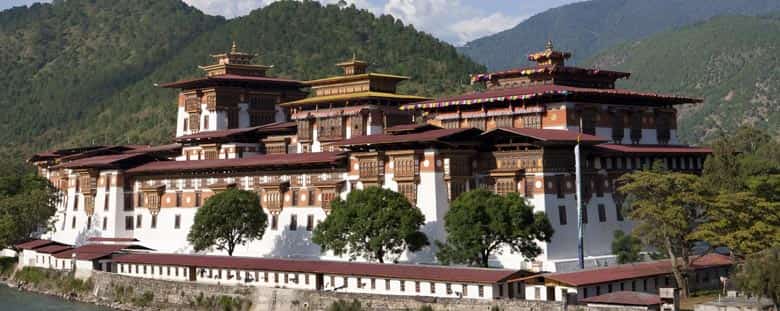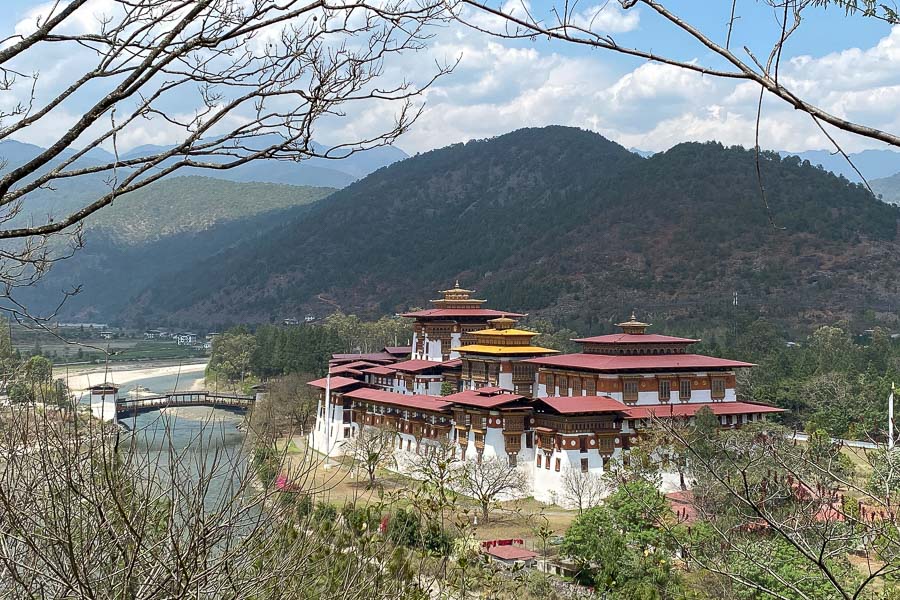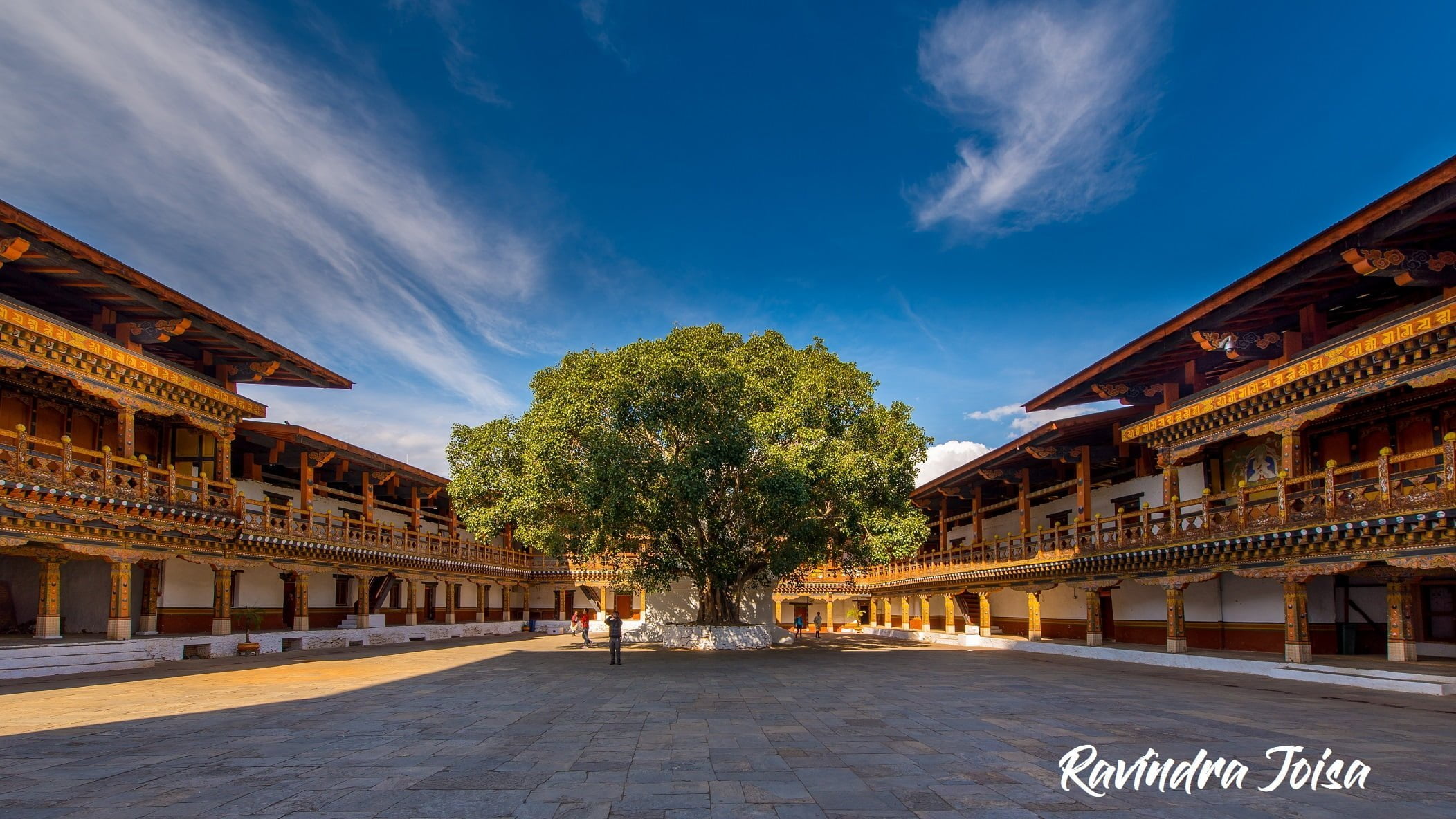Punakha Dzong: Bhutan's Majestic Palace Fortress

Introduction to Punakha Dzong in Bhutan
Overview of Punakha Dzong's historical significance
Punakha Dzong is a stunning fortress located at the confluence of the Pho Chhu and Mo Chhu rivers in western Bhutan. You will be amazed to know that it is the second oldest and second largest dzong in Bhutan, holding great historical and cultural importance. This majestic structure served as the capital of Bhutan until 1955 and continues to be the winter residence of the central monastic body.
Architectural features of Punakha Dzong
Your visit to Punakha Dzong will leave you speechless with its impressive architectural design. The dzong is characterized by towering white walls, golden roof structures, and intricate woodwork that reflects traditional Bhutanese craftsmanship. As you explore the various courtyards, temples, and halls within the fortress, you will truly appreciate the blend of Tibetan and Bhutanese architectural styles.
When you stand before the grand Kuenray (assembly hall) or walk across the cantilever bridge over the river, you can feel a sense of tranquillity and spirituality enveloping you. During festive occasions like the annual Punakha Drubchen, visitors like yourself have an opportunity to witness vibrant masked dances depicting Buddhist teachings.
The picturesque setting of Punakha Dzong against a backdrop of verdant hills adds to its charm, making it a must-visit destination for travellers seeking cultural enrichment and natural beauty. Don't miss out on exploring this gem nestled in the heart of Bhutan during your next adventure!

Location and Setting of Punakha Dzong
Geographical location of Punakha Dzong in Bhutan
Punakha Dzong sits majestically at the meeting point of the Pho Chhu and Mo Chhu rivers in western Bhutan. You can easily imagine the tranquillity that comes from being surrounded by such serene waters, adding to the spiritual ambience of this historic fortress.
Scenic beauty and natural surroundings of Punakha Dzong
The picturesque setting of Punakha Dzong speaks volumes about its charm. As you take in the view, lush green hills form a breathtaking backdrop to this architectural wonder. The combination of ancient structures against a canvas of vibrant nature will surely make your visit an unforgettable experience full of cultural richness intertwined with natural beauty.

History of Punakha Dzong
Construction and establishment of Punakha Dzong
Moving on to its history, Punakha Dzong was constructed in 1637 by Zhabdrung Ngawang Namgyal. With meticulous attention to detail, this grand architecture stands as a testament to Bhutanese craftsmanship and engineering skills that have withstood the test of time.
Role of Punakha Dzong in Bhutanese history and culture
Throughout Bhutanese history, Punakha Dzong has served as both a religious centre and an administrative hub. It holds immense cultural significance as the place where coronations take place, honouring traditions that symbolize unity and strength within Bhutanese society.
Whether delving into its historical importance or admiring its architectural splendour, visiting Punakha Dzong offers a glimpse into the rich tapestry of Bhutanese heritage.

Architectural Design of Punakha Dzong
Unique architectural elements of Punakha Dzong
You cannot help but be captivated by the intricate architectural details that adorn Punakha Dzong. From the ornate wood carvings to the vibrant murals depicting Buddhist stories, every corner of this structure is a masterpiece waiting to be explored. The design seamlessly blends Bhutanese and Tibetan styles, creating a harmonious fusion that reflects the region's cultural diversity.
Symbolism and cultural significance in the design of Punakha Dzong
Exploring Punakha Dzong goes beyond admiring its beauty; it delves into a deeper realm of symbolism and cultural meaning. Each architectural element carries significance, from the towering white walls symbolizing purity to the red rooftops representing power. You will immerse yourself in a world where every pillar and corridor tells a story of Bhutanese heritage and spirituality.

Inner Courtyard and Main Structures of Punakha Dzong
Description of the inner courtyard and its structures
As you step into the inner courtyard of Punakha Dzong, a sense of tranquillity washes over you. The open space is surrounded by imposing whitewashed walls adorned with intricate patterns, creating a serene ambience that invites contemplation.
In the centre, a lush garden adds a touch of greenery to the ensemble, providing a peaceful retreat from the bustling world outside. The sound of prayer flags fluttering in the breeze only enhances the spiritual atmosphere of this sacred place.
Key buildings and halls within Punakha Dzong
Exploring further into Punakha Dzong unveils a tapestry of key buildings and halls that hold deep cultural significance. The Utse, or central tower, stands tall as the heart of the complex, symbolizing spiritual power and authority.
Adjacent to it, the Machen houses ancient relics and treasures, offering a glimpse into Bhutan's rich history. As you meander through the corridors, you encounter majestic assembly halls like the Lhakhang, where elaborate rituals occur amidst flickering butter lamps and sweet incense smoke. Each structure narrates a unique story woven into the fabric of Punakha Dzong's architectural splendour.
Religious and Cultural Significance of Punakha Dzong
Spiritual importance and religious practices at Punakha Dzong
As you immerse yourself in the inner courtyard of Punakha Dzong, you can feel a deep sense of spiritual connection enveloping you. The peaceful surroundings and the soothing ambience create a perfect setting for meditation and reflection.
The sacredness of this place is palpable, with every corner whispering tales of ancient traditions and beliefs. The central tower, Utse, exudes a sense of reverence, serving as a focal point for prayers and contemplation. Walking through the corridors lined with prayer flags, you can't help but feel the spiritual energy that permeates every inch of Punakha Dzong.
Cultural events and festivals held at Punakha Dzong
Delving deeper into Punakha Dzong's cultural tapestry reveals a vibrant calendar filled with colourful events and festive celebrations. Throughout the year, the dzong comes alive with traditional dances, music performances, and vibrant processions that showcase Bhutan's rich cultural heritage.
From the grand Tsechu festival to intimate ceremonies honouring local deities, every event held within these walls is imbued with centuries-old customs and rituals. As you witness these cultural spectacles unfold, you can't help but be swept away by the beauty and depth of Bhutanese traditions kept alive at Punakha Dzong.

Renovations and Preservation Efforts at Punakha Dzong
Efforts to preserve and maintain the historical integrity of Punakha Dzong
As you step into Punakha Dzong, you become a custodian of its rich history and cultural legacy. The efforts to preserve this architectural marvel testify to the deep respect for Bhutanese heritage.
Each stone, each mural, and every intricate detail holds centuries of stories waiting to be safeguarded for future generations. Your presence contributes to the preservation of this sacred place, ensuring that its spiritual essence remains untouched by the passage of time.
Renovation projects and conservation initiatives
Walking through Punakha Dzong, you witness a harmonious blend of ancient craftsmanship and modern conservation techniques. Renovation projects undertaken here aim to restore the physical structure and revive the soul of this sacred site.
Conservation initiatives focus on sustainable practices that honour tradition while embracing innovation. As you explore the ongoing work within these walls, you are part of a collective effort to ensure that Punakha Dzong remains a beacon of Bhutanese culture and spirituality.
Visitor Information and Travel Tips
Guidelines for visitors to Punakha Dzong
As you embark on a journey to Punakha Dzong, your presence becomes a cherished link in the chain of its historical preservation. Remember to wear modest clothing out of respect for the sanctity of this place. Your steps echo those who have walked these halls before, connecting past and present in a shared reverence for Bhutanese culture.
Best time to visit and practical travel tips
When planning your visit to Punakha Dzong, aim for the early morning or late afternoon when the light bathes the ancient walls in a golden glow. Be prepared for varying weather conditions and bring layers as needed. Local guides offer insights that enrich your experience, so consider engaging one while exploring this living monument to Bhutanese heritage.
